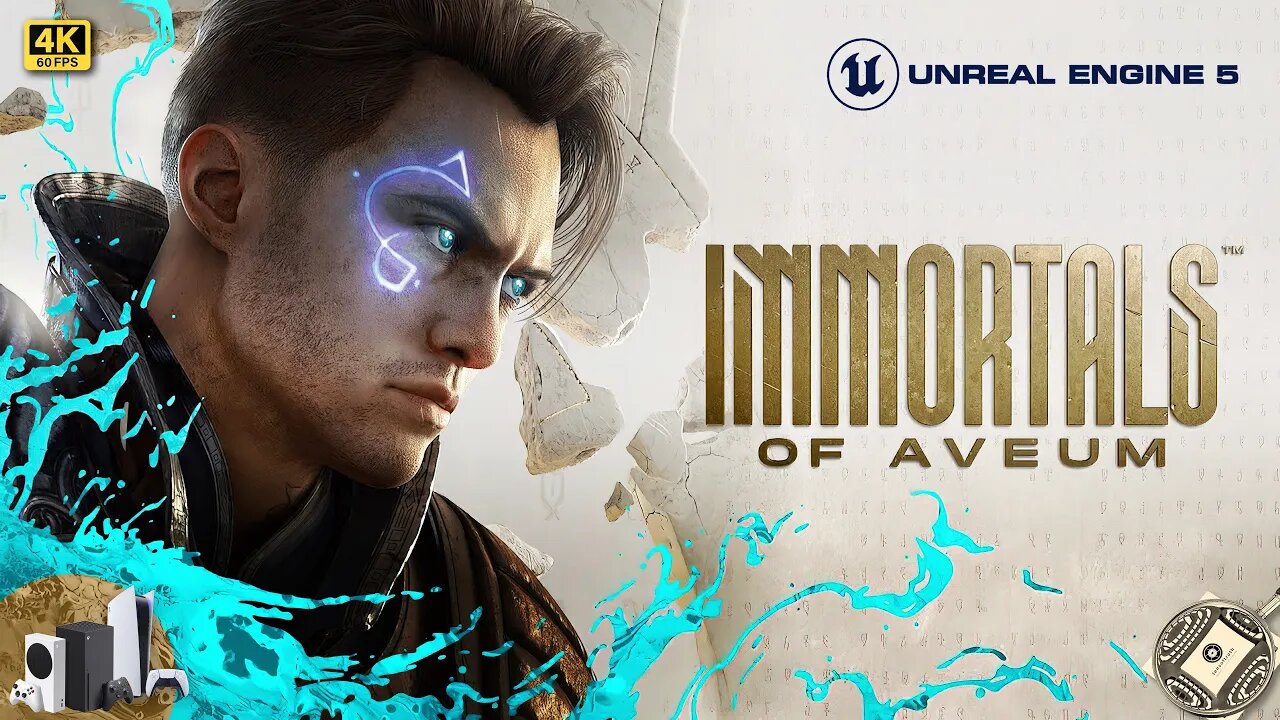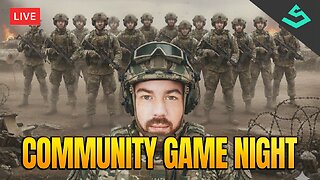Premium Only Content

Immortals of Aveum Tech Analysis on Xbox Series S/X and PS5 - Unreal 5
Analysis of performance and image quality of Immortals of Aveum on Xbox Series S/X and PS5.
Index:
Intro 00:00
Frame Rate 00:09
Resolution 02:14
Draw Distance 03:54
Frame Rate 04:54
Reflections 06:59
Shadows 07:59
Frame Rate 08:59
Textures 11:04
Loading 12:04
Conclusions 12:38
Xbox Series S Tech Specs 13:12
Xbox Series X Tech Specs 13:22
PS5 Tech Specs 13:32
Technical dictionary:
- Draw Distance:
In computer graphics, draw distance (render distance or view distance) is the maximum distance of objects in a three-dimensional scene that are drawn by the rendering engine. Polygons that lie beyond the draw distance will not be drawn to the screen.
- AMD FidelityFX™ Super Resolution (FSR):
FidelityFX Super Resolution (FSR) is used to upsample an input image into a higher resolution. There are two versions of FSR with distinctive upscaling technique and image quality.
FSR 1 is a spatial upscaler based on the Lanczos algorithm* requiring an anti aliased lower resolution image.
FSR 2 and 2.1 is a temporal upscaler based on a modified Lanczos* requiring an aliased lower resolution image and utilising the temporal data (such as motion vectors and frame history) and then applies its own anti aliasing pass which replaces the game's temporal anti-aliasing solution.
Quality Preset Scale Factor Render Scale
Performance 2.0x 50.0% (e.g. for 4k: 1080p upscale to 2160p with FSR)
Balanced 1.7x 58.8% (e.g. for 4k: 1270p upscale to 2160p with FSR)
Quality 1.5x 66.6% (e.g. for 4k: 1440p upscale to 2160p with FSR)
* The Lanczos algorithm is an iterative algorithm invented by Cornelius Lanczos that is an adaptation of power methods to find eigenvalues and eigenvectors of a square matrix or the singular value decomposition of a rectangular matrix. It is particularly useful for finding decompositions of very large sparse matrices.
- Screen Space Reflections (SSR):
Screen space reflections (SSR): a more expensive technique that traces reflection rays in screen space (as opposed to world space in e.g. ray tracing). This is done for each rendered pixel of the reflected surface, using the surface normal and scene depth.
The disadvantage is that objects not captured in the rendered frame cannot appear in the reflections, which results in unresolved intersections and incomplete reflection image.
- Ray-Traced Reflections
Ray-Traced Reflections is a more accurate ray-traced solution to Screen Space Reflection technique (that traces reflection rays in screen space), ray tracing traces reflection rays in world space.
The disadvantage of the technique using ray tracing is the need for a dedicated hardware for accelerating the calculations needed to perform the feature.
- Shadow Mapping
Shadow mapping or shadowing projection is a process by which shadows are added to 3D computer graphics. This concept was introduced by Lance Williams in 1978, in a paper entitled "Casting curved shadows on curved surfaces."[1] Since then, it has been used both in pre-rendered and realtime scenes in many console and PC games. Shadows are created by testing whether a pixel is visible from the light source, by comparing the pixel to a z-buffer or depth image of the light source's view, stored in the form of a texture.
- Simple Shadow Mapping
Simplest possible implementation of Shadow Mapping, without any smoothing or additional features.
- Soft Shadows Mapping
Soft shadows are typically rendered in games by using shadow mapping and Percentage Closer Filtering with a uniform kernel size. The Percentage-Closer Soft Shadows (PCSS) algorithm computes a variable kernel size based on the distance between the relative position of the receiver point, an approximation of the blocker, and the area light.
- Ray-traced Shadows
Ray-traced shadows are generated by tracing the path of rays sampled from a light source. Ray-traced shadows are more accurate than shadow-mapped shadows. All ray-traced shadows are world space shadows.
- Unreal Engine 5 Nanite
Nanite is Unreal Engine 5's virtualized geometry system which uses a new internal mesh format and rendering technology to render pixel scale detail and high object counts. It intelligently does work on only the detail that can be perceived and no more. Nanite's data format is also highly compressed, and supports fine-grained streaming with automatic level of detail.
- Unreal Engine 5 Virtual Shadow Maps
Virtual Shadow Maps (VSMs) is the new shadow mapping method used to deliver consistent, high-resolution shadowing that works with film-quality assets and large, dynamically lit open worlds using Unreal Engine 5's Nanite Virtualized Geometry, Lumen Global Illumination and Reflections, and World Partition features.
-
 LIVE
LIVE
efenigson
1 day agoDiscover The Big Red Button! Joe Bryan | You're The Voice - LIVE from Lugano PlanB Forum!
48 watching -
 DVR
DVR
Stephan Livera
2 days agoDay 2 - Stephan Livera hosts Plan B Podcast in Lugano
45 -
 DVR
DVR
vivafrei
15 hours agoLive from Lugano Plan B in Switzerland w/ Efrat Fenigson and Prince Filip Karađorđević!
44.1K1 -
 46:40
46:40
Bitcoin Infinity Media
1 day ago $5.29 earnedBitcoin Infinity Academy at Plan B Forum 2025
22.4K1 -
 18:12:15
18:12:15
Side Scrollers Podcast
1 day ago🔴SIDE SCROLLERS SUB-A-THON🔴FINAL DAY!🔴Craig Makeover + US Dart Throw + More!
559K31 -
 2:05:58
2:05:58
TimcastIRL
12 hours agoSHOTS FIRED, Leftists ATTACK Coast Guard & Feds In SHOCK Terror Attack | Timcast IRL
262K187 -
 1:07:25
1:07:25
Man in America
18 hours agoThe BRICS War on the Dollar Just Hit Endgame—What's Next Changes EVERYTHING
57K16 -
 3:23:45
3:23:45
SOLTEKGG
9 hours ago🔴LIVE - Community Game Night - GIVEAWAY
44.6K2 -
 8:22:30
8:22:30
SpartakusLIVE
11 hours ago#1 Friday Night HYPE, viewers GLUED to the screen
69.8K -
 55:50
55:50
NAG Podcast
10 hours agoAda Lluch: BOLDTALK W/Angela Belcamino
36.3K2